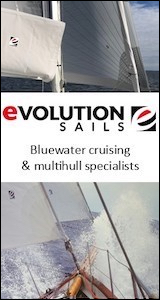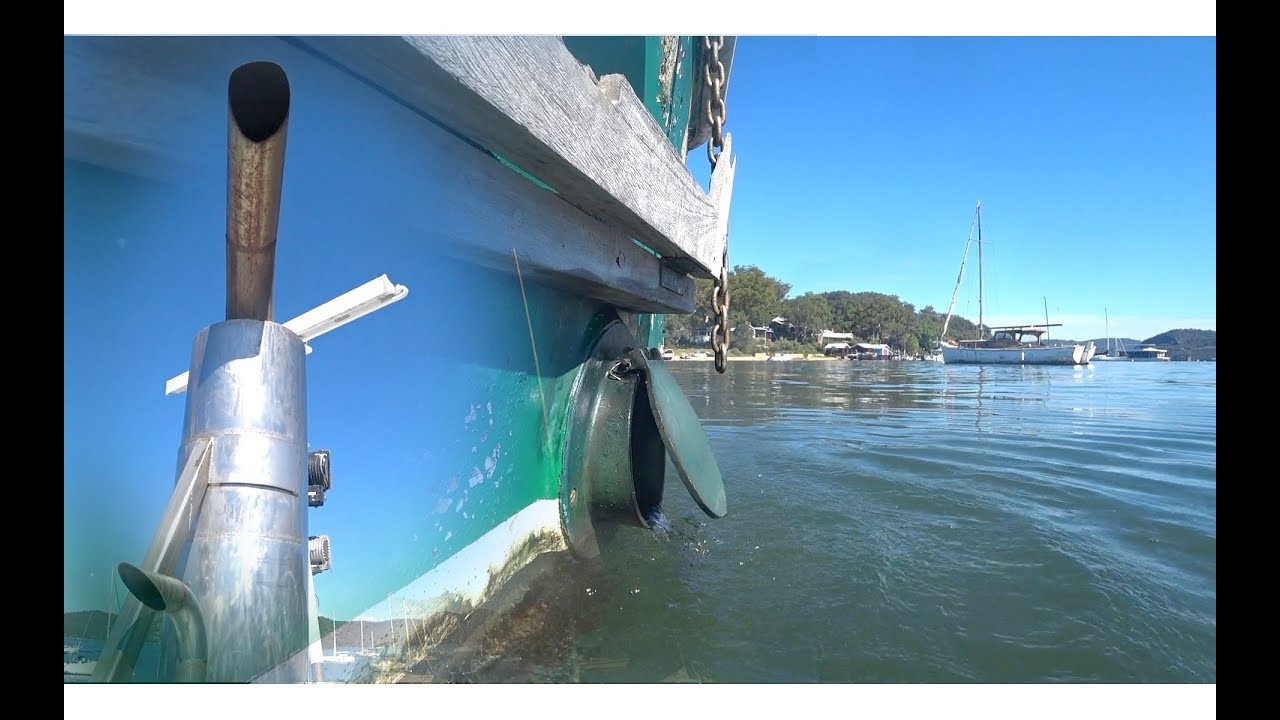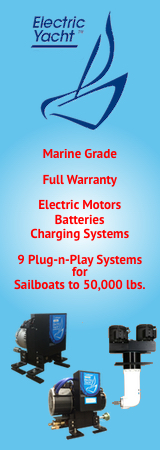Forum Replies Created
-
AuthorPosts
-
 PaulKParticipant
PaulKParticipantBacon’s might have used sails for you. Give them a try: https://baconsails.com
October 12, 2020 at 11:46 pm in reply to: Looks like I have a king shark 20 sail boat rescued from scrap #84127 PaulKParticipant
PaulKParticipantLooks a lot better now than when you bought her! Now with the season coming to an end you can REALLY get to work.

 PaulKParticipant
PaulKParticipantAre your tanks full?
 PaulKParticipant
PaulKParticipantTo expand on the difference between long and short keels and lift…
To develop the most lift possible for the wetted surface, naval architects tend to make keels short from front to back. An aeronautical example of this would be a glider. Its wings are long, but narrow. The curve of the wings develops lift that helps keep them in the air, especially at low speeds. Boats move at similarly low speeds, so boats that are fast upwind have deep fin keels that are fairly short on their chord, front to back. Developing lift in a long, shallow keel is more difficult. Water flows from the high-pressure side, under the keel, to the low-pressure side since the length of the keel (and it’s relative short depth) provide more opportunity for this than a long, narrow foil. The hull also interferes with flow on the keel surface. As an example, supersonic planes have long, backswept, “delta-shaped” wings. This design helps them cut the sound barrier and provides sufficient lift at high speed to keep them in the air. Your long keel is like the supersonic plane’s – but there is no way your boat can move fast enough to make it provide much lift. In fact, imagine a Concorde with wings 100 feet long but only 20 feet wide. It would not get off the ground. That is sort of what you’re dealing with, at 6 knots instead of 600.
 PaulKParticipant
PaulKParticipantLots of variables with the setup you have. Your long keel is not helping with windward performance; such a long foil has a hard time developing lift, to counter leeway. It could also be messing up your tacks if your timing on the swells is off, since such a long keel tends to make want the boat go straight all the time. Are you sailing upwind with the mizzen up too? Your post doesn’t say. Most racers furl the mizzen going upwind because it creates more windage than drive. The sailplan makes it look like the main is well forward, so dropping the mizzen might make tacking trickier – you may have to try it and see. Do you have instruments that show you VMG? It could be that you are pinching the boat too much into the wind for optimal performance. Even though the sails may be full and not luffing, they could be strapped in too tight – like sheets of plywood – and not able to create the lift and drive you need to make good progress. Try easing sheets and heading off perhaps 5º and going faster. You will have to travel farther because you are heading off, but because you are going faster your keel will become more efficient at keeping you from going sideways. If you head up 5º but go sideways 4º, your net gain is only 1º, and you’re going slowly. If you don’t head up 5º but only go sideways 2º, your net gain is 3º, and you’re going faster. It’s a tricky balancing act.
 PaulKParticipant
PaulKParticipantSounds like you need a refrigeration specialist to have a look. Refrigerant from 1974 (freon?) is probably not permitted or available. Newer refrigerants may or may not be compatible with your setup because of piping or seal materials. The specialist may be able to help you out with what you have and get it to work. He may also suggest replacing the entire mess with a more efficient modern unit that might cost less to run and end up saving you money.
 PaulKParticipant
PaulKParticipantThese people seem to know a good bit:
They have articles, photos, and a forum that seems quite active and current.
September 14, 2020 at 2:07 am in reply to: Need Help w/ Issue with Glander Cay Exhaust Below Waterline #84038 PaulKParticipant
PaulKParticipant PaulKParticipant
PaulKParticipantNo scale shows on the drawings, so you may have to print out a copy and use dividers to space out a scale of your own. The “P” dimension of 34’ for the mainsail is the length between the black bands on the mast. Half of that will be 17’, half of that will be 8.5’ etc. You can double-check your scale by using the LOA of 30’ and doing the same thing to determine 15’, 7.5’, etc.
 PaulKParticipant
PaulKParticipantLooks like the broker made a mistake in the listing. This:
https://www.breweryacht.com/boat/1986/sweden-yachts/36-center-cockpit-sloop/3860/#gallery-13 is obviously not a center-cockpit boat. Sweden Yachts have a decent reputation for build quality and systems, with nice joinery. They don’t seem to race much. This one seems well equipped. The teak deck would give me pause on this one, though the price is right. PaulKParticipant
PaulKParticipantEbay and Craigslist are your friends.
 PaulKParticipant
PaulKParticipantSpinnaker poles are usually about the same length as the length from the base of the mast to the forestay bow fitting. This makes them long enough to stick out beyond the forestay when they’re set, and short enough to dip below the forestay in a dip-pole gybe.
 PaulKParticipant
PaulKParticipantConsidering how annoying the noise is to others in the mooring field when a generator starts up, being aboard with one running must be absolutely unbearable.
 PaulKParticipant
PaulKParticipantLittle demand and too many variables for an app to work well: angle of the shot, distance, focus, details not visible, scale… Most people just post pictures on sites like this one and let other posters provide insight.
 PaulKParticipant
PaulKParticipantThe drawing here: https://sailboatdata.com/sailboat/dolphin-24-yankee
is to scale. Some of these boats may have been sold with interiors to be added by the buyers. -
AuthorPosts





